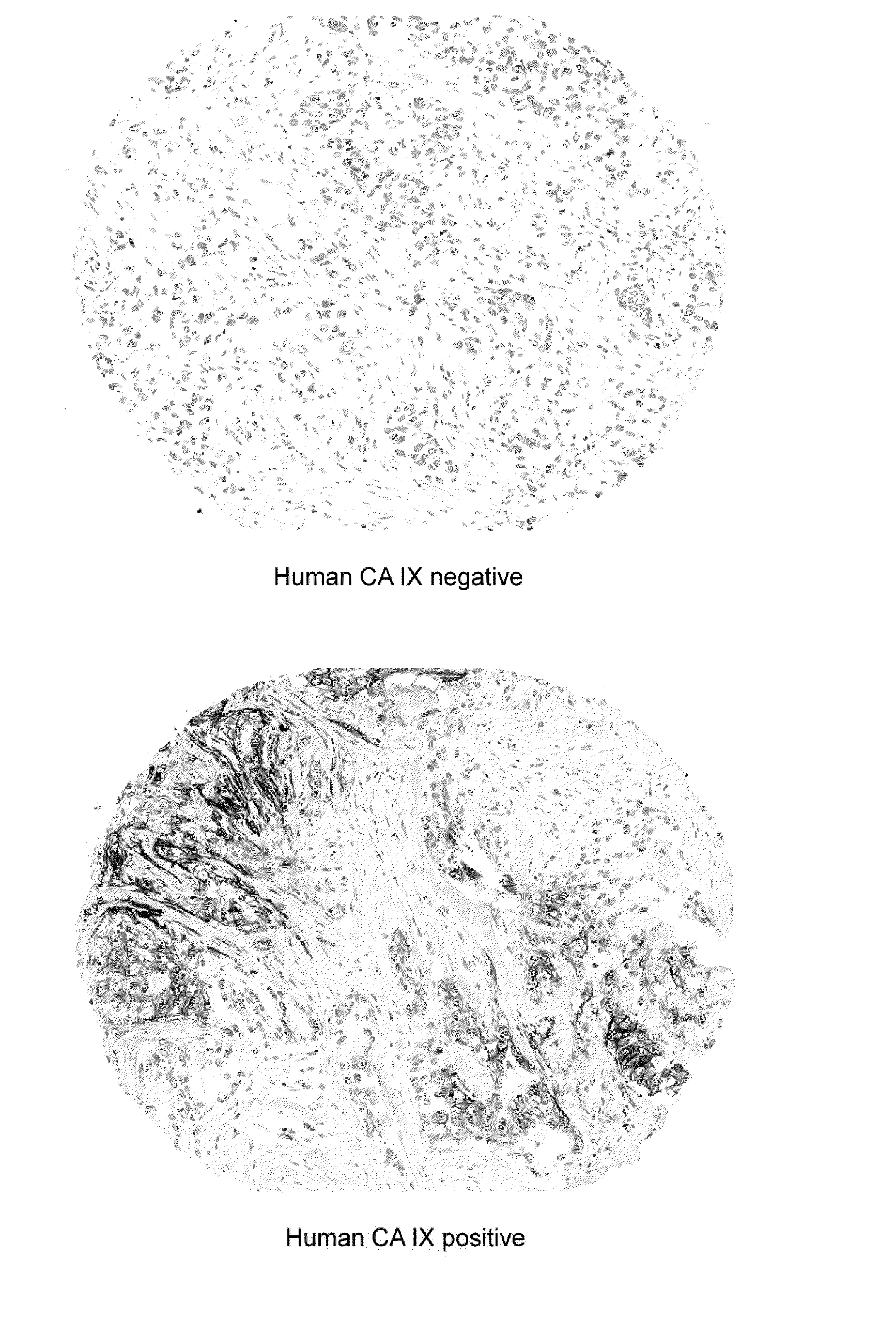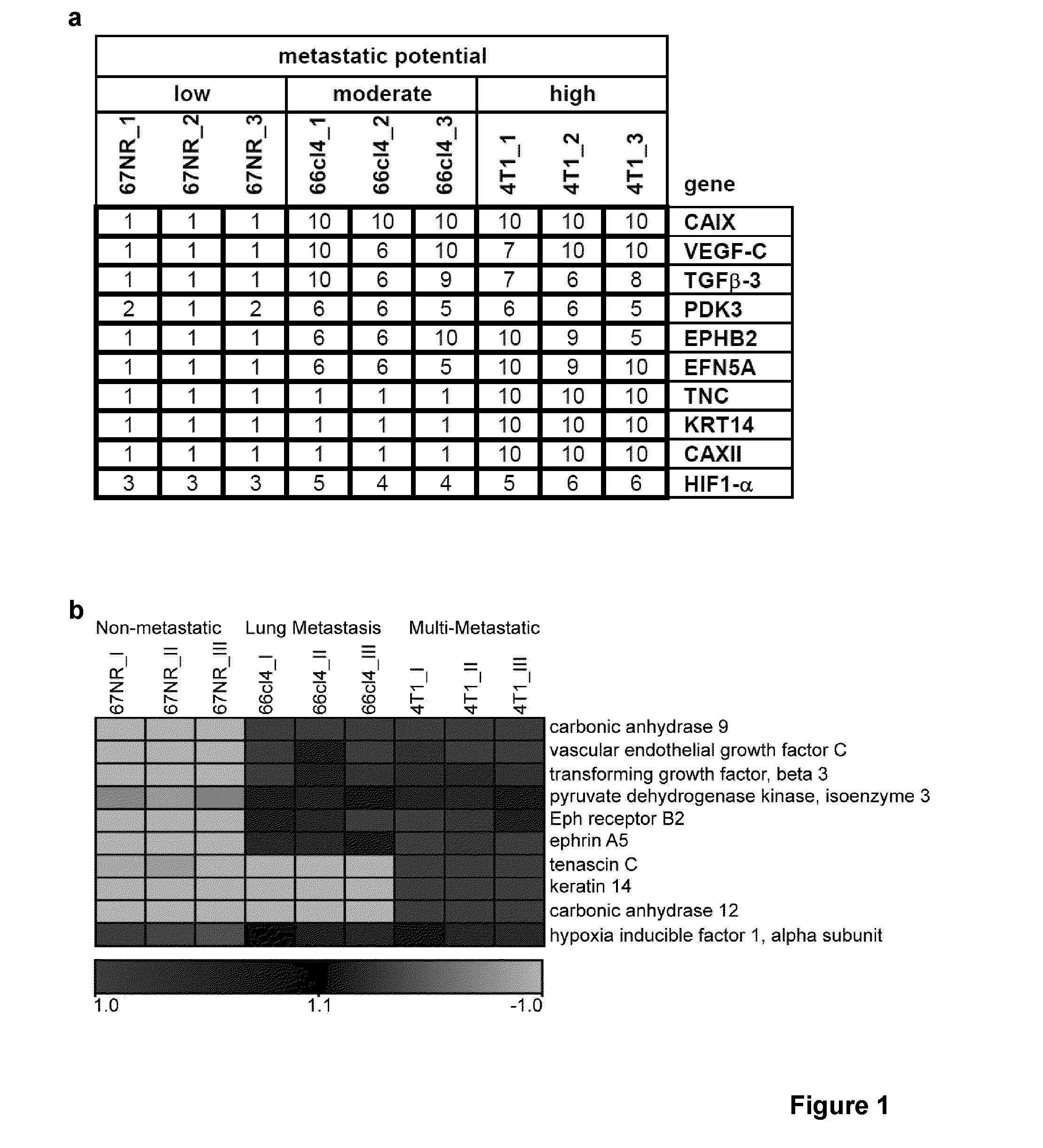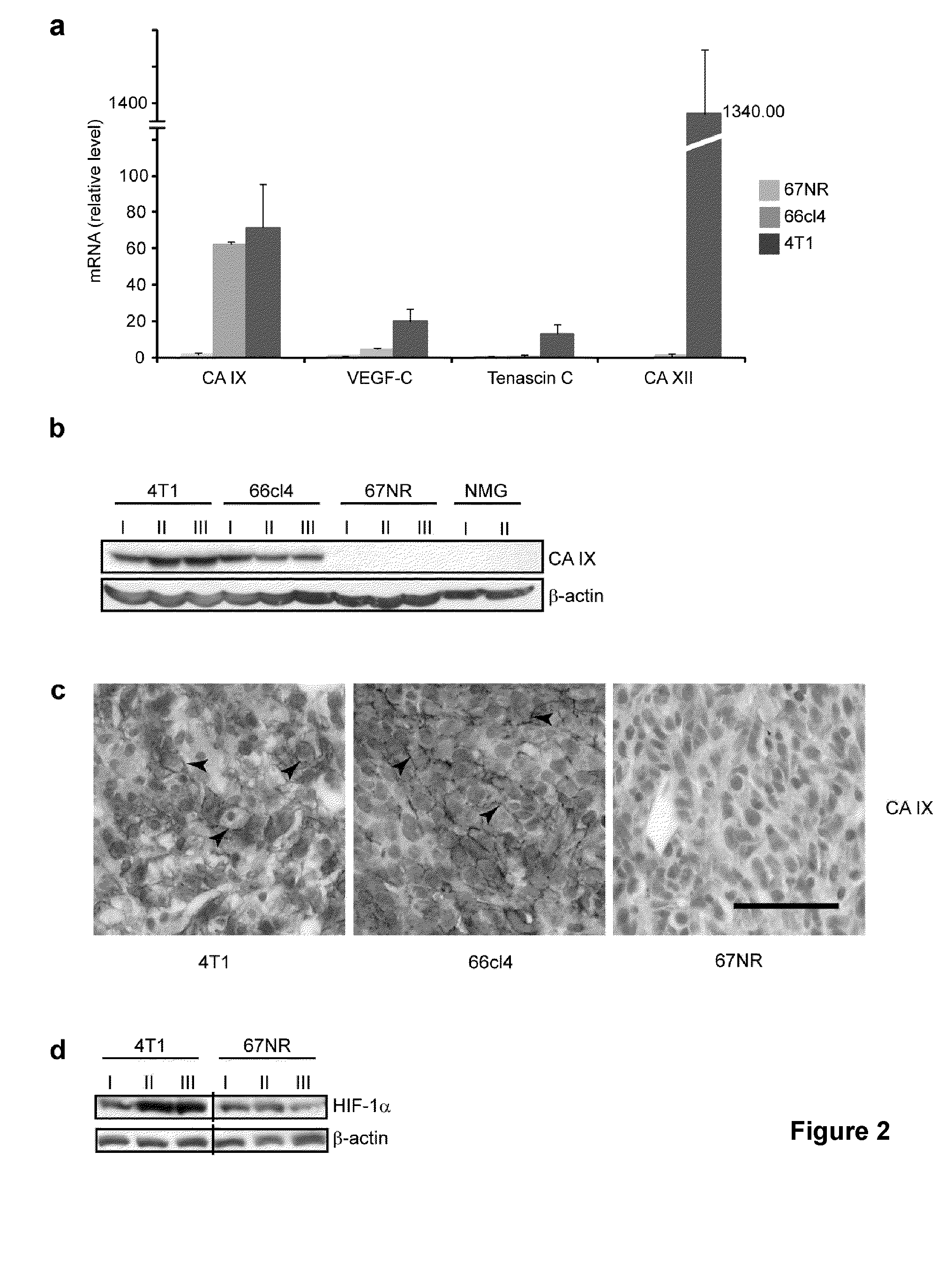Biomarkers of cancer metastasis
a biomarker and cancer technology, applied in the field of cancer diagnosis techniques, can solve the problems of not being able to define the molecular properties of primary tumours that dictate metastaticity
- Summary
- Abstract
- Description
- Claims
- Application Information
AI Technical Summary
Benefits of technology
Problems solved by technology
Method used
Image
Examples
example 1
Differential Expression of Hypoxia Inducible Genes in Metastatic Versus Non-Metastatic Primary Tumours
[0141]The complex nature of metastasis requires animal models that can recapitulate the human situation, including spontaneous metastasis from primary tumours and an intact immune system. A well established clinically relevant syngeneic mouse model of spontaneous breast cancer metastasis was used to investigate differential expression of hypoxia inducible genes in metastatic versus non-metastatic primary tumours9,10. The model is highly robust in that several syngeneic tumour cell lines with a spectrum of metastatic phenotypes have been isolated from a spontaneous metastatic mammary tumour in a BALB / cfC3H mouse. When injected into the mammary glands of mice, the tumour cell lines form primary tumours within two weeks10,11, but vary in their metastatic potential and organ specificity. The 67NR cells are non-metastatic, whereas the 66cl4 produce spontaneous metastases to the lungs on...
example 2
Primary Tumour Characterization
[0149]The differential expression of hypoxia inducible genes in the metastatic tumours versus the non-metastatic tumours, led us to investigate the extent of hypoxia, necrosis, apoptosis, proliferation, vascularization and lymphangiogenesis in 4T1, 66cl4 and 67NR tumours. Tumours were grown and labeled in vivo for proliferation (BrdU), hypoxia (pimonidazole) and perfusion (DiOC7). Immunohistochemistry for CD31 (vasculature) and in situ detection of TUNEL (apoptosis) were then performed. Necrosis was assessed by histology. Representative composite, pseudocolored images demonstrated the presence of each marker. Ten individual 67NR, 66cl4 or 4T1 tumours were sectioned and stained for the above parameters.
[0150]FIG. 3, part a, depicts whole tumour averages for microvessel density (MVD) as determined by CD31 staining, proliferation as determined by BrdUrd staining, hypoxia as determined by pimonidazole staining, apoptosis as determined by TUNEL labeling, an...
example 3
Carbonic Anhydrase IX as a Driver of Metastatic Potential
[0154]The differential expression of CAIX in the metastatic versus the non-metastatic primary tumours, led to investigation of whether the differences in hypoxia induced CAIX expression in the metastatic and non-metastatic tumours are innate properties of the cells or whether they are acquired in vivo. The three cell lines were cultured under normoxic or hypoxic conditions for various time periods and the expression of CAIX, as well as other hypoxia inducible proteins, was determined.
[0155]FIG. 4, part a, shows levels of gene expression as determined by quantitative RT-PCR (qRT-PCR); n=3. Error bars indicate s.e.m. The indicated cell lines were cultured in normoxia or hypoxia for 48 hours. Data shown are representative of three independent experiments. CAIX expression was readily induced after 48 hours in hypoxia in both 66cl4 and 4T1 metastatic cells, but was not induced in the non-metastatic 67NR cells. Similarly, the expres...
PUM
| Property | Measurement | Unit |
|---|---|---|
| Magnetic field | aaaaa | aaaaa |
| Level | aaaaa | aaaaa |
Abstract
Description
Claims
Application Information
 Login to View More
Login to View More - R&D
- Intellectual Property
- Life Sciences
- Materials
- Tech Scout
- Unparalleled Data Quality
- Higher Quality Content
- 60% Fewer Hallucinations
Browse by: Latest US Patents, China's latest patents, Technical Efficacy Thesaurus, Application Domain, Technology Topic, Popular Technical Reports.
© 2025 PatSnap. All rights reserved.Legal|Privacy policy|Modern Slavery Act Transparency Statement|Sitemap|About US| Contact US: help@patsnap.com



